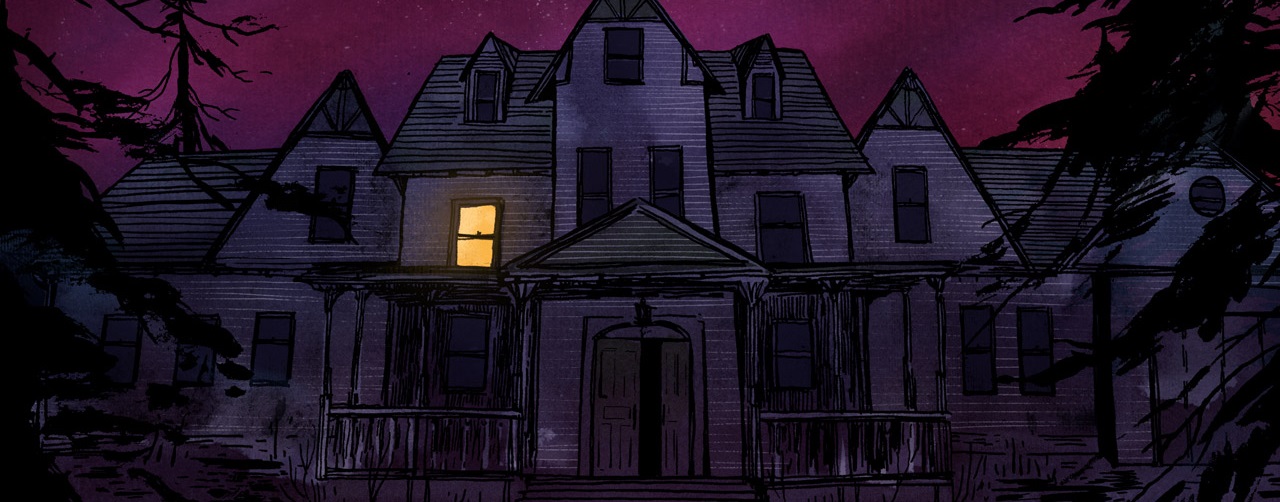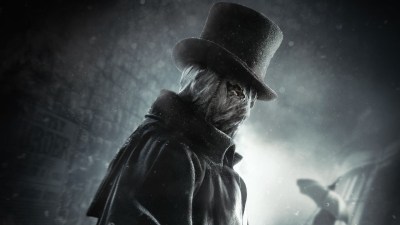Much can be said about The Fullbright Company’s Gone Home - that it’s decidedly story-based, with minimal action, and that it’s fairly short: a playthrough won’t take you more than a couple of hours.
Thankfully, it’s also an excellent experience - with fantastic writing, an immersive story and characters that you grow to care about despite their physical absence. What follows is an atmospheric and touching tale which asks the question - does love truly conquer all?
Gone Home tells the story of Kaitlin, a young woman who’s returned home on a stormy night in 1995 from a trip abroad, to find her parents on vacation and her sister missing. It’s your job to explore the family home to find out what happened - have you been robbed? Is something supernatural going on?
At the start of the game’s two hour run-time (which could be significantly shorter if you were speed-running, and a little longer if you give every item in the game a thorough search), Kaitlin arrives home. With no key for the front door and noone home, you’re quickly and simply introduced to most of the game mechanics, finding a a key to open the door under a duck figurine in your covered porch. A note on the door greets you, with your sister saying to not try to find her. From here, you’re graced with the opening room of a rather expansive mansion. You’ll turn on lights, listen to the answering machine, and pull open drawers to find paperwork and scraps that start to point out mysteries. Crumpled pieces of paper, packaging slips, and abandoned typewriters all start one of the side-plots of the game - your father’s failed writing career.
Throughout most of the diary entries you hear narrated when finding certain items in the game, it becomes a narrative of how two teenage girls can slowly discover feelings for each other that are more than simple friendship, and become a true love. The girls will soon figure out that they can’t keep things going forward given their post-high school plans and the disapproval of parents… or can they?
To discuss much more about the narrative would to spoil the experience, but suffice to say that it’s a touching story which will pull at the strings of all but stoniest of hearts.
The gameplay is incredibly simplistic. Kaitlin Greenbriar’s adventure sees you moving around the home picking up items and reading notes. There’s no violence, no punches or kicks, and no shooting and a couple of tasks which could be described as puzzles. This is in no way a criticism however; it’s a nice change to play a game that relies purely on narrative and exploration, and completely avoids violence and action.
Gone home thrives on realism, with believable (if not, actual scans of) television schedule clippings littered around, real musicians and bands mentioned on magazine covers (even if they’re fake magazines), and Super Nintendo cartridges littered around rooms. Some of the designs might be simplistic, such as some book jackets or product models, but the notes and letters which you’ll find and read throughout the game’s short running time are all hand-written and immersive.
Despite this attention to detail, you never get to actually see Kaitlin, either as a reflection in a mirror or glass window, nor when you look down to the ground. Kaitlin, in effect, is a floating, disembodied camera. The few glances you do see of the family are on name badges and one lone portrait hanging on a wall. While perfectly acceptable, we can’t help but feel the lack of Kaitlin’s physical presence as a character model is a missed opportunity.
Once finished with the exploration, you should give the game another run through. This time, when starting a new game, select “modifiers” to make the game a bit easier. With this menu consisting of the entirity of extras for the game, you’ll have simple tweaks such as unlocking every door and lock to automatically turning on every light. But the real treat you’re looking for is the commentary mode. Playing this mode will bring up new commentary buttons that, like the diary function of the main game, once clicked will play audio clips from the development team, designers, and others who contributed in some fashion to the product. It’s a wonderful addition if you found any sort of enjoyment in the game, revealing everything from who did the handwriting for many notes to the story of the game’s mini-mascot, The Christmas Duck. It’s a feature that more games should include, especially for people who regularly exhaust all their extras on BluRay and DVD releases, and definitely gives some more insight into the production and characterization of the crew; notably amusing is the lead writer pointing out the humor of a straight male teenager writing a lesbian female teenager, as he’s only shared one aspect of growing up with the focus character of the game.
Gone Home has won many awards, including Game Of The Year. Is the title worthy of such acclaim? While it’s decidedly one of the best stories that the medium has produced, and definitely doesn’t overstay its welcome, at times it can feel like a prelude to a larger game, or one that just could have benefited from another month or two of development time. In lieu of a large development budget, Gone Home strives - and thrives - on focusing on narrative structure and story; the graphics are acceptable but underwhelming, the soundtrack is fitting but fairly forgettable, and your interactions in the world vary from being effective to awkward.
Ultimately, Gone Home could be considered to be an interactive short story - albeit one where the interactive elements are put aside to focus on telling a fantastic story. Gone Home is effectively a great visual novel; whether it qualifies as a videogame however, us ultimately something that you’ll need to decide for yourself. Either way, it comes recommended.

